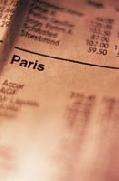
 |
|
| Financial Terms | |
| Volatility |
|
Information about financial, finance, business, accounting, payroll, inventory, investment, money, inventory control, stock trading, financial advisor, tax advisor, credit.
Main Page: stock trading, credit, finance, financial, inventory control, money, tax advisor, payroll, |
Definition of Volatility
VolatilityA measure of risk based on the standard deviation of investment fund performance over 3 years. VolatilityThe probability of change Volatilitya. Another general term for sensitivity. b. The standard deviation volatilityA measure of the amount of change in the daily price of a security over a specified period of time. It is Uusually given as the standard deviation of the daily price changes of that security on an annual basis.
Related Terms:Implied volatilityThe expected volatility in a stock's return derived from its option price, maturity date, Reward-to-volatility ratioRatio of excess return to portfolio standard deviation. Volatility riskThe risk in the value of options portfolios due to the unpredictable changes in the volatility of Implied volatilityFor an option, the variance that makes a call option price  Cross-border riskRefers to the volatility of returns on international investments caused by events associated Graham-Harvey Measure 1Performance measure invented by John Graham and Campbell Harvey. The Graham-Harvey Measure 2Performance measure invented by John Graham and Campbell Harvey. The Hedge ratio (delta)The ratio of volatility of the portfolio to be hedged and the return of the volatility of the HedgingA strategy designed to reduce investment risk using call options, put options, short selling, or futures KappaThe ratio of the dollar price change in the price of an option to a 1% change in the expected price volatility. LambdaThe ratio of a change in the option price to a small change in the option volatility. It is the partial Yield curve option-pricing modelsModels that can incorporate different volatility assumptions along the BetaThe price volatility of a financial instrument relative to the price  Black-Scholes modelThe first complete mathematical model for pricing SensitivityThe "what if" relationship between variables; the degree to which VegaThe rate of change in the price of a derivative security relative to the standard deviationSquare root of variance. Another measure of volatility. varianceAverage value of squared deviations from mean. A measure of volatility. Index Portfolio Rebalancing Service (IPRS)Index Portfolio Rebalancing Service (IPRS) is a comprehensive investment service that can help increase potential returns while reducing volatility. Several portfolios are available, each with its own strategic balance of Index Funds. IPRS maintains your personal asset allocation by monitoring and rebalancing your portfolio semi-annually. Related to : financial, finance, business, accounting, payroll, inventory, investment, money, inventory control, stock trading, financial advisor, tax advisor, credit. |